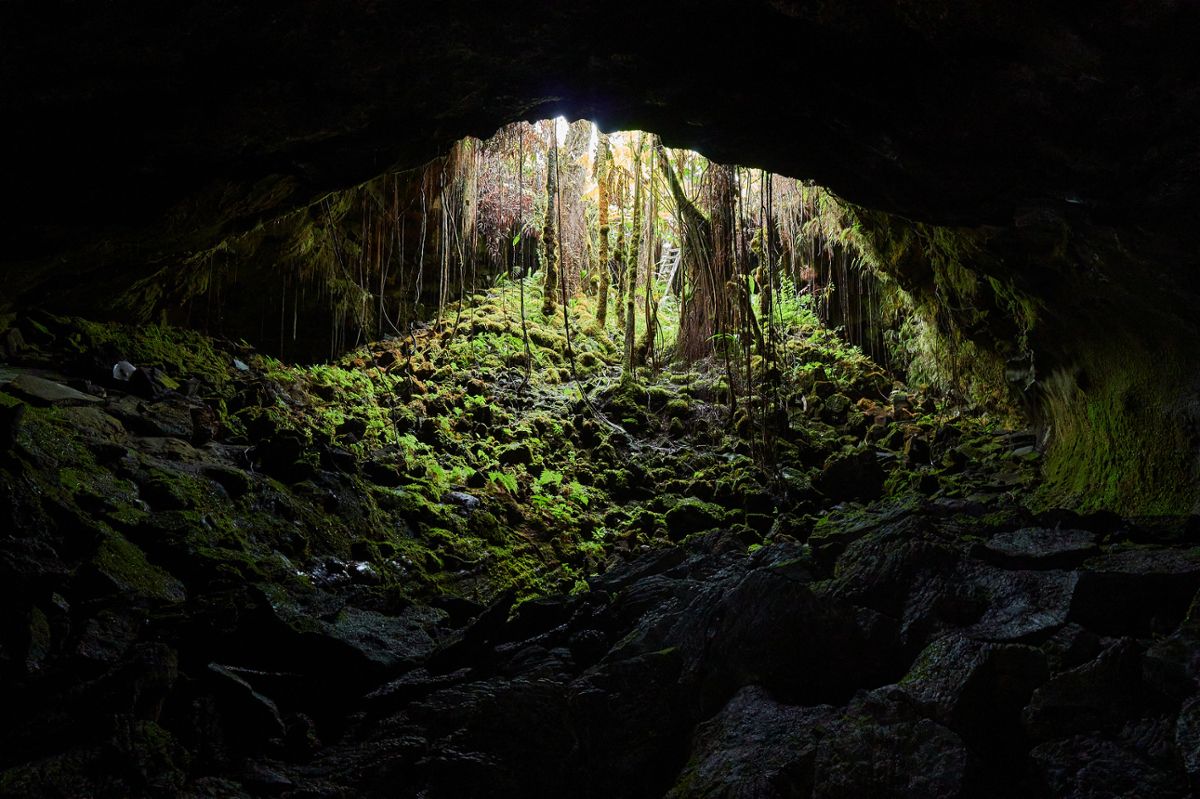Do you live near a dormant volcano? You might have a weird wonderland right beneath your feet.
During a volcanic eruption, lava tube caves form as molten lava flows down the volcano in channels and drainages. As the surface lava cools and hardens, a lava tube cave is created. Some are big as a subway, some too small to enter. They’re all made of solidified lava, which has hardened into strange stalactites and stalagmites, trenches and ledges, splatters and swirls. Eventually debris and topsoil cover the cave roof, and you’d never guess the otherworldly structures a few yards underground.
A cave of solid lava might seem uncomfortable. It’s damp and dark, with little airflow, and that solid lava is scratchy and sharp. Yet certain lifeforms happily call these this place home. Fungi and bacteria spread across the rocks, making colorful splotches along the walls. Bats, too dwell here. Some species of trees have adapted to living right above lava caves; their stringy roots puncture the cave’s ceiling as they search for water, and grow down into the cave’s floor.
Roots are often important places for critters. Moths use them as mating hotspots, while spiders use them as hiding places to watch for prey. Crickets, centipedes, beetles, and cockroaches mill about, some of whom gnaw on the roots for food. Some cave-dwellers have adapted to their rocky abode: these species are eyeless and pale, with enhanced sensory organs allowing them to thrive in complete darkness. Sometimes, life found in lava caves exists nowhere else on earth. Because of this, these delicate systems and the animals they support deserve our protection.










